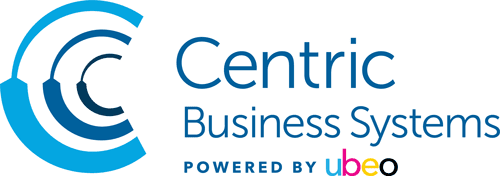Looking ahead at 2023 Document and Workflow Management
Disruption is probably the kindest term to describe what began to happen in the office during 2020. It continued into 2021 and 2022 as organizations kept adjusting to the new realities of the remote and hybrid workforce, cementing in employees’ minds that being in the office wasn’t required to be productive and that work-life flexibility was something most don’t want to give up. Surveys show 70% of workers want to continue a remote or hybrid way of working even after the pandemic is over, with 1 in 4 saying they would quit if they weren’t given this flexibility. Investing in technology to manage the data, documents, and workflows of business have enabled many organizations to survive, even flourish, by meeting the needs of the new remote and hybrid workplace reality. Looking at document and workflow management technology in 2023, here are some things that an organization will want to keep in mind.
Digital Transformation Does Not Slow Down
The term “digital transformation” was first used a decade ago. A general definition is “… the adoption of digital technology that has the capability to transform the business.” Certainly, digital technologies that enable virtual meetings and remote collaboration sessions have transformed the way many firms conduct business. When it comes to documents and workflow, digital transformation is much more than just digitizing documents for lower storage costs and easier search. Digitizing paper documents and capturing and extracting critical information from digital documents and even image and video files can help remove time-consuming and error-prone manual steps in important business processes such as procurement and payment, accounts receivable, or employee onboarding. The digital transformation of these types of processes allows remote workers to continue productively from wherever they are working. Digital transformation in 2023 and in years to come will continue to accelerate and become a key requirement for firms wanting to maintain competitiveness.
More AI and RPA
To drive the digital transformation of many organizations, the use of artificial intelligence (AI) and robotic process automation (RPA) will increase. The use of AI can be as simple as capturing information from a document via OCR and using that information to determine where to send the document as the next step in a workflow. However, AI can be used in more complex ways to interpret the text of a document or file, listen to a voice command, or search an image. This allows contextual-based searches of databases to find additional information that adds important insight or significantly more value to the original content.
RPA “robots” replace the tedious human-based repetitive manual steps in many business processes, freeing up the human resources to focus on activities that are more valuable to the firm. Incorporating AI and RPA in document and workflow management strategies will require thoughtful analysis and decision-making to determine where and when to institute them. The right combination of AI and RPA permits a firm to make document and workflow management steps more easily distributed, a critical element in supporting the new remote and hybrid work environment.
Paper and Print Are Not Disappearing
2023 will not be the year of the paper-free office – either at the corporate office or in the remote offices of the hybrid workforce. Although there will be less printing and subsequently less paper, workers will still need a printer or MFP accessible for documents required in paper form, or simply for convenience. This means firms will need to continue to actively monitor their print fleets to manage device usage and keep printing costs under control. New challenges of providing printing services to those remote employees while effectively relocating, replacing, or eliminating less-used devices in the office will cause firms to look for print solution providers that not only understand the needs of the new hybrid work environment, but take a holistic view of how, where, and when to develop and combine printer and digital document management solutions.
Security Needs Increase
Every year, security increases in importance. Unfortunately, digitization of documents, data, and workflows, as well as the growing distributed workforce creates more security risks. Malevolent actors taking advantage of the disruption this is causing in organizations’ IT security plans. In 2023, organizations will need to implement strategies and new technology solutions that provide easier, more effective implementation and management of security settings in document and workflow management solutions and across the hybrid work environment. IT departments must stay vigilant to harden their defenses against ever-increasing and more complex digital security attacks.
Security is also critical in the print environment, and security solutions or services will become an expected part of any print solution or managed print services (MPS) agreement. The spreading use of remote workers in the hybrid office and the growing threat of using printers as network attack endpoints means that monitoring, managing, and mitigating security threats in the print fleet is not an option, but a necessity. Additionally, compliance requirements will keep driving privacy and security requirements for customer data, forcing better user access controls when printing and distributing documents containing this information.
The document management, workflow, MPS, and security solution experts at Centric Business Systems have enabled many organizations and their employees to function productively and securely over the challenging times of the past 32 months. With an understanding that no two organizations are alike, they are prepared to help you plan your document management and workflow technology strategies for 2023 and beyond. Visit us at www.centricbiz.com or contact us at (877) 902-3301 to schedule a free consultation.
